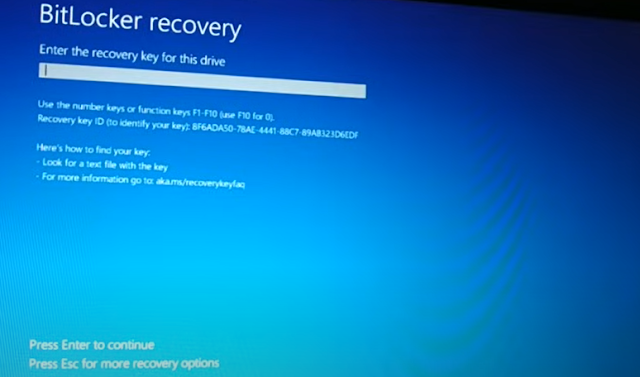Forgot bit locker pin, forgot bit locker recovery key, 5 Easy ways to fix


In Python, a dictionary is a collection of key-value pairs, where each key is associated with a specific value. Dictionaries are mutable, meaning you can change their contents (add, modify, or remove key-value pairs) after creation. They are also unordered, so the order in which items are added to a dictionary is not guaranteed to be the order in which they are stored.
### Creating Dictionaries
You can create a dictionary by placing a comma-separated list of key-value pairs inside curly braces `{}`, with a colon `:` separating each key from its corresponding value. You can also use the `dict()` function.
```python
# Creating a
dictionary with curly braces
person = {
"name": "John",
"age": 30,
"city": "New York"
}
# Creating a
dictionary using the dict() function
person =
dict(name="John", age=30, city="New York")
# Creating
an empty dictionary
empty_dict =
{}
```
###
Accessing Values
You can
access the value associated with a specific key by using square brackets `[]`
or the `get()` method.
```python
# Using
square brackets
print(person["name"]) # Output: John
# Using the get()
method
print(person.get("age")) # Output: 30
```
If you try
to access a key that does not exist using square brackets, Python will raise a
`KeyError`. However, using the `get()` method will return `None` (or a
specified default value) if the key is not found.
```python
# Using
square brackets (raises KeyError)
#
print(person["height"]) #
KeyError: 'height'
# Using
get() (returns None)
print(person.get("height")) # Output: None
# Using
get() with a default value
print(person.get("height",
180)) # Output: 180
```
###
Modifying Dictionaries
You can
modify a dictionary by adding, updating, or removing key-value pairs.
- **Adding
or Updating**: Assign a value to a key using square brackets. If the key
exists, its value will be updated; if not, a new key-value pair will be added.
```python
# Adding a new key-value pair
person["height"] = 180
print(person)
# Output: {'name': 'John', 'age': 30, 'city': 'New York', 'height': 180}
# Updating an existing key-value pair
person["age"] = 31
print(person)
# Output: {'name': 'John', 'age': 31, 'city': 'New York', 'height': 180}
```
-
**Removing**: You can remove a key-value pair using the `del` statement, the
`pop()` method, or the `popitem()` method.
```python
# Using del
del person["city"]
print(person)
# Output: {'name': 'John', 'age': 31, 'height': 180}
# Using pop() (returns the value of the
removed key)
age = person.pop("age")
print(age)
# Output: 31
print(person)
# Output: {'name': 'John', 'height': 180}
# Using popitem() (removes and returns the
last inserted key-value pair)
last_item = person.popitem()
print(last_item) # Output: ('height', 180)
print(person)
# Output: {'name': 'John'}
```
-
**Clearing**: You can remove all key-value pairs using the `clear()` method.
```python
person.clear()
print(person)
# Output: {}
```
###
Dictionary Methods
Dictionaries
have several built-in methods that allow you to perform various operations:
-
**`keys()`**: Returns a view object containing all the keys in the dictionary.
```python
person = {"name": "John",
"age": 31, "city": "New York"}
keys = person.keys()
print(keys)
# Output: dict_keys(['name', 'age', 'city'])
```
-
**`values()`**: Returns a view object containing all the values in the
dictionary.
```python
values = person.values()
print(values)
# Output: dict_values(['John', 31, 'New York'])
```
-
**`items()`**: Returns a view object containing all the key-value pairs in the
dictionary as tuples.
```python
items = person.items()
print(items)
# Output: dict_items([('name', 'John'), ('age', 31), ('city', 'New
York')])
```
-
**`update()`**: Updates the dictionary with key-value pairs from another
dictionary or iterable of key-value pairs.
```python
person.update({"age": 32,
"height": 180})
print(person)
# Output: {'name': 'John', 'age': 32, 'city': 'New York', 'height': 180}
```
-
**`copy()`**: Returns a shallow copy of the dictionary.
```python
new_person = person.copy()
print(new_person) # Output: {'name': 'John', 'age': 32, 'city':
'New York', 'height': 180}
```
###
Dictionary Comprehensions
Dictionary
comprehensions provide a concise way to create dictionaries. It’s similar to
list comprehensions but produces a dictionary.
```python
# Example:
Creating a dictionary of squares
squares =
{x: x**2 for x in range(1, 6)}
print(squares) # Output: {1: 1, 2: 4, 3: 9, 4: 16, 5: 25}
```
### Nested
Dictionaries
Dictionaries
can contain other dictionaries, creating a nested dictionary.
```python
nested_dict
= {
"person1": {"name":
"John", "age": 30},
"person2": {"name":
"Jane", "age": 25}
}
print(nested_dict["person1"]["name"]) # Output: John
print(nested_dict["person2"]["age"]) # Output: 25
```
### When to
Use Dictionaries
Dictionaries
are ideal when you need to associate keys with values and want to efficiently
look up, add, or modify these associations. They are commonly used for:
- **Storing
configurations or settings** where each key is a setting name and its value is
the setting's value.
- **Mapping
unique identifiers (like user IDs) to data** (like user information).
- **Counting
occurrences** of items (by storing the item as the key and the count as the
value).
###
Conclusion
Python
dictionaries are a powerful and flexible way to store and manage data. They
allow you to map keys to values, making it easy to look up, modify, and manage
associations between data elements. Understanding how to use dictionaries
effectively is essential for writing efficient and organized Python code.